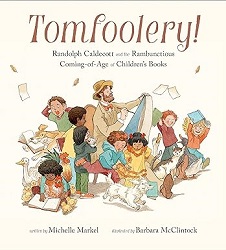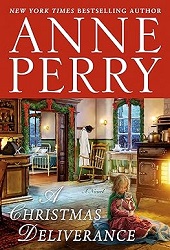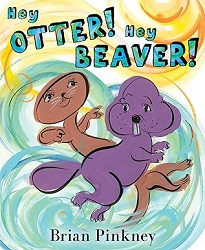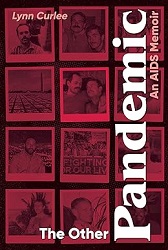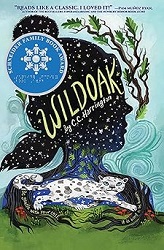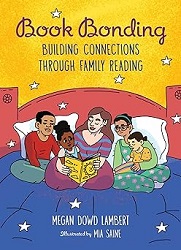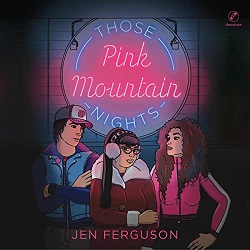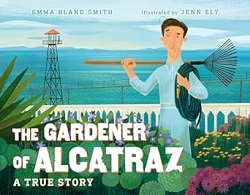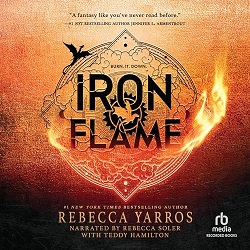Review of Tomfoolery! by Michelle Markel, illustrated by Barbara McClintock
Randolph Caldecott and the Rambunctious Coming-of-Age of Children’s Books
written by Michelle Markel
illustrated by Barbara McClintock
Chronicle Books, 2023. 40 pages.
Review written December 6, 2023, from a library book.
Starred Review
This picture book biography of Randolph Caldecott begins like this:
Come on in.
A whole world lives and breathes inside these pages. You’ll find frisky animals, sprightly characters, and a hero so chipper he can barely hold still on the paper.
But in the 1850s, there are no children’s books like this one. Many are published, but their pictures look stiff, full of pretty poses and cluttered scenery. No one has yet imagined how much fun an illustrated book could be.
No one, until…
Quick!
If you don’t move fast, you’re going to miss him — Randolph Caldecott, future famous illustrator. A fever has weakened his heart and left him frail, but he loves to be outdoors . . .
This amazing book shows us what made Randolph Caldecott different. We do see examples of picture books before Caldecott on that first page, and then the rest of the book is done in Caldecott’s style — with movement on every single page. There’s only one exception — the page where Randolph is sitting alone on a chair in his flat in London, sad and wishing to be back in the countryside. Even in that page, your eye is drawn out the window to the rooftops of London. Barbara McClintock expertly incorporates Caldecott’s own work in the illustrations — also full of movement — with even a grand full-color spread of Mr. Gilpin’s ride taken straight from Caldecott’s work — the same scene used for one face of the Caldecott Medal.
The page talking about Caldecott’s international success and how he transformed children’s picture books is especially wonderful, as it shows many Caldecott Medalists looking at their own books — I recognize several, including Maurice Sendak, Jerry Pinkney, and Dan Santat. My one complaint about the book is that they did not include a list of authors pictured in the back matter. They did include a list of Randolph Caldecott’s books and told which illustrations include reproductions of Caldecott’s own art and which of his books they came from.
I liked this even better than the author’s book Balderdash! about John Newbery, I think because the topic is so visual, and the artist could incorporate Randolph Caldecott’s own illustrations to show us how good he was at bringing characters to life.
Ha! And that’s interesting: In Balderdash! she mentioned that John Newbery used the story of Goody Two-Shoes to show that children could learn from stories better than sermons. But in this book, Goody Two-Shoes is one of the books shown as an example of picture books with stiff poses and little movement. So essentially, John Newbery helped publishers get started on making books for children, and Randolph Caldecott helped them make books with dynamic illustrations that captured kids’ attention.
michellemarkel.com
barbaramcclintockbooks.com
chroniclekids.com
Find this review on Sonderbooks at: www.sonderbooks.com/Childrens_Nonfiction/tomfoolery.html
Disclosure: I am an Amazon Affiliate, and will earn a small percentage if you order a book on Amazon after clicking through from my site.
Disclaimer: I am a professional librarian, but the views expressed are solely my own, and in no way represent the official views of my employer or of any committee or group of which I am part.
What did you think of this book?
